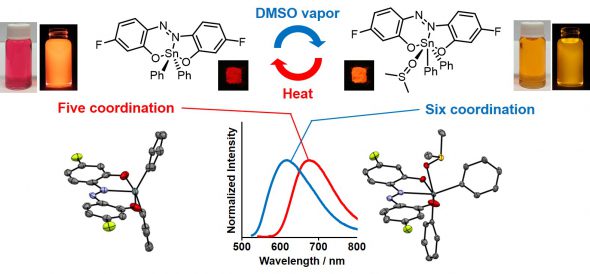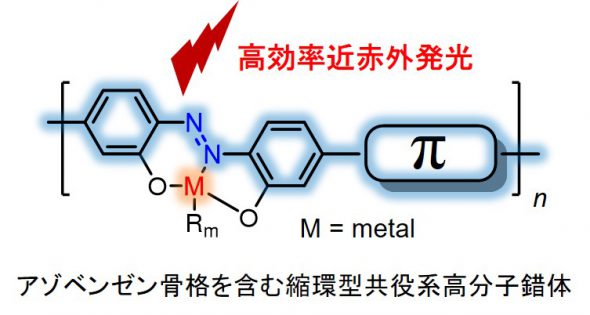-
About
- Kyoto Prize
-
Research Grants
-
Social Contributions
- Events
- News
This website uses cookies to improve the user experience. If you continue on this website, you will provide your consent to our use of cookies.
About
Research Grants
Social Contributions

Assistant Professor,Graduate School of Engineering, Kyoto University*Profile is at the time of the award.
2020Inamori Research GrantsScience & Engineering
Thank you very much for adopting this theme. Through this research, I hope to create a new trend in materials chemistry by focusing on interesting organic structures.
Near-infrared light is used for bioimaging and optical communication because of its high biopermeability, transparency and low attenuation. The demand is increasing more and more with the development of IoT era and medical fields. We have proposed tin-fused azobenzene complexes for a versatile structure showing highly efficient near-infrared emission.
In this research, we synthesized hypervalent tin-fused azobenzene complexes and investigated their optical properties. As a result, it was found that the complexes showed emission in the deep-red region without expanding the π-conjugation length. Furthermore, we have found the emission color is blue-shifted by changing the hypervalent tin complexes from a five-coordinated state to a six-coordinated state. The alteration to the six-coordinated state proceeded easily by exposing the powder to solvent vapor. To the best of my knowledge, it is the first report of discovering vapochromism based on hypervalent bond. We have experimentally and theoretically proved that the three-center four-electron (3c-4e) bond, which is one of the bond modes peculiar to the hypervalent bond, had a great influence on the energy level of the π-conjugated system. It is difficult for a general conjugated system to realize these properties, and it can be said that they are unique to hypervalent complexes. It will be possible to synthesize highly efficient near-infrared-emissive π-conjugated polymers by using the hypervalent tin complex, and it is expected that it will greatly contribute to the development of science and technology in the near future.

Gon M, Tanaka K, Chujo Y (2021) Vapochromic Luminescent pi-Conjugated Systems with Reversible Coordination-Number Control of Hypervalent Tin(IV)-Fused Azobenzene Complexes. Chemistry — A European Journal 27(27):7561-7571. https://doi.org/10.1002/chem.202100571
Science & Engineering

